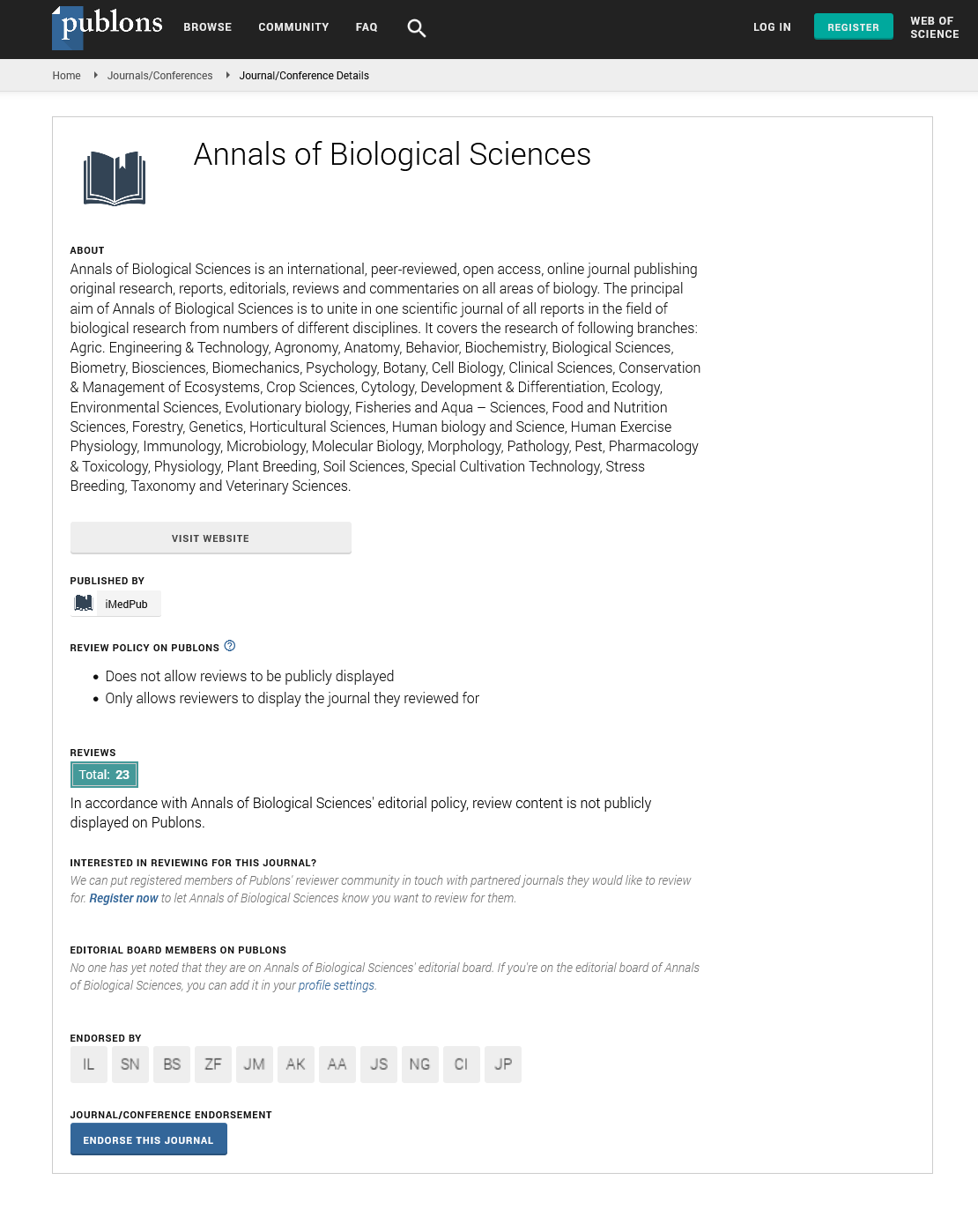HOST-PATHOGEN INTERACTIONS
The host–pathogen collaboration is characterized as how microorganisms or infections support themselves inside host living beings on an atomic, cell, organismal or populace level. This term is most regularly used to allude to ailment causing microorganisms despite the fact that they may not cause ailment in all hosts.Because of this, the definition has been extended to how realized pathogens get by inside their host, regardless of whether they cause sickness or not.
On the atomic and cell level, microorganisms can taint the host and gap quickly, causing malady by being there and causing a homeostatic awkwardness in the body, or by emitting poisons which cause manifestations to show up. Infections can likewise taint the host with destructive DNA, which can influence typical cell forms (interpretation, interpretation, and so on.), protein collapsing, or avoiding the insusceptible reaction
High Impact List of Articles
-
Biogases from Biological Waste Resources Utilization via Chemical or Biochemical Approaches
Research Paper: Annals of Biological Sciences
-
Biogases from Biological Waste Resources Utilization via Chemical or Biochemical Approaches
Research Paper: Annals of Biological Sciences
-
Clozapine Modulates the Glycogen Synthase Kinase-3 Signaling partly via GABAB Receptors
Ping Su, Anlong Jiang, Fang LiuResearch Article: Annals of Biological Sciences
-
Clozapine Modulates the Glycogen Synthase Kinase-3 Signaling partly via GABAB Receptors
Ping Su, Anlong Jiang, Fang LiuResearch Article: Annals of Biological Sciences
-
Effect of aqueous root extract of Fadogia andersonii on sperm count and motility in adult male Wistar rats
I. Suleimana, M.A. Mabroukb, A. W. AlhassanaResearch Article: Annals of Biological Sciences
-
Effect of aqueous root extract of Fadogia andersonii on sperm count and motility in adult male Wistar rats
I. Suleimana, M.A. Mabroukb, A. W. AlhassanaResearch Article: Annals of Biological Sciences
-
Histological Effects of Melatonin and Azadirachta Indica Administration on the Pancreatic tissue in Streptozotocin-induced Diabetic Wistar Rats
E. T. Godam, M.O.A. Samaila, A.O. Ibegbu, W.O. Hamman and S.A. MusaResearch Article: Annals of Biological Sciences
-
Histological Effects of Melatonin and Azadirachta Indica Administration on the Pancreatic tissue in Streptozotocin-induced Diabetic Wistar Rats
E. T. Godam, M.O.A. Samaila, A.O. Ibegbu, W.O. Hamman and S.A. MusaResearch Article: Annals of Biological Sciences
-
Diagnostic importance of URINALYSIS in endocrinology- A review
Olooto, Wasiu EniolaReview Article: Annals of Biological Sciences
-
Diagnostic importance of URINALYSIS in endocrinology- A review
Olooto, Wasiu EniolaReview Article: Annals of Biological Sciences
Conference Proceedings
-
Quantitative characterization of RNA fitness landscapes
Ramon Xulvi-BrunetScientificTracks Abstracts: Annals of Biological Sciences
-
Quantitative characterization of RNA fitness landscapes
Ramon Xulvi-BrunetScientificTracks Abstracts: Annals of Biological Sciences
-
Bottom-up strategies for reconstitution of multi-protein complexes using the baculovirus expression system
Poterszman ArnaudKeynote: Annals of Biological Sciences
-
Bottom-up strategies for reconstitution of multi-protein complexes using the baculovirus expression system
Poterszman ArnaudKeynote: Annals of Biological Sciences
Relevant Topics in General Science
Google Scholar citation report
Citations : 406
Annals of Biological Sciences received 406 citations as per Google Scholar report
Annals of Biological Sciences peer review process verified at publons
Abstracted/Indexed in
- Google Scholar
- China National Knowledge Infrastructure (CNKI)
- WorldCat
- Publons
- ROAD
- Secret Search Engine Labs
Open Access Journals
- Aquaculture & Veterinary Science
- Chemistry & Chemical Sciences
- Clinical Sciences
- Engineering
- General Science
- Genetics & Molecular Biology
- Health Care & Nursing
- Immunology & Microbiology
- Materials Science
- Mathematics & Physics
- Medical Sciences
- Neurology & Psychiatry
- Oncology & Cancer Science
- Pharmaceutical Sciences
